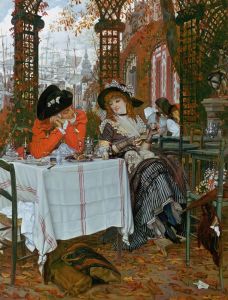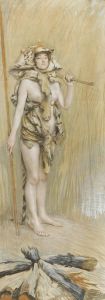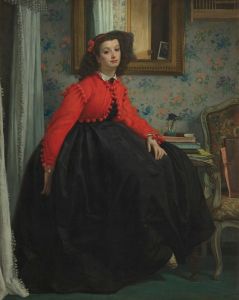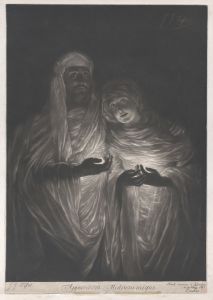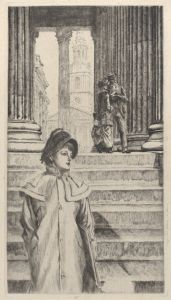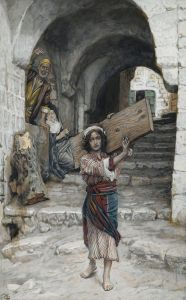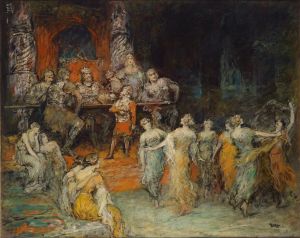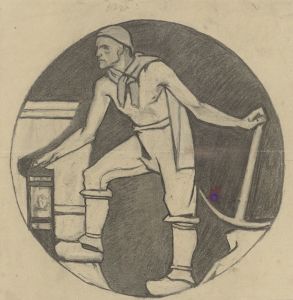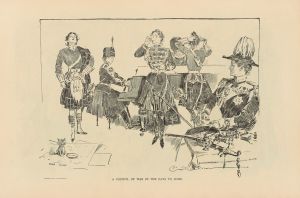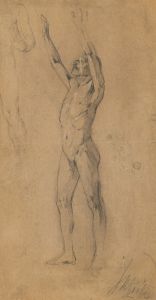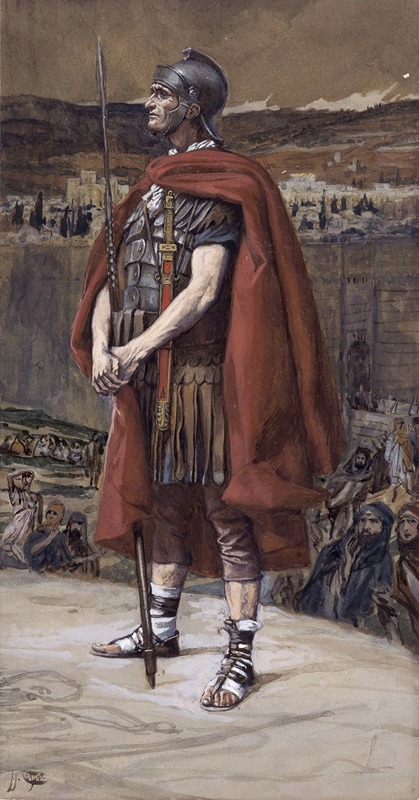
The Centurion
A hand-painted replica of James Tissot’s masterpiece The Centurion, meticulously crafted by professional artists to capture the true essence of the original. Each piece is created with museum-quality canvas and rare mineral pigments, carefully painted by experienced artists with delicate brushstrokes and rich, layered colors to perfectly recreate the texture of the original artwork. Unlike machine-printed reproductions, this hand-painted version brings the painting to life, infused with the artist’s emotions and skill in every stroke. Whether for personal collection or home decoration, it instantly elevates the artistic atmosphere of any space.
"The Centurion" is a painting by the French artist James Tissot, created as part of his extensive series of works illustrating the life of Jesus Christ. Tissot, known for his meticulous attention to detail and historical accuracy, completed this painting during the later part of his career, after a transformative period in his life that led him to focus on religious themes. The work is one of the many watercolors included in his ambitious project titled The Life of Christ, which he began in the 1880s and completed in the 1890s.
James Tissot traveled to the Middle East to study the landscapes, architecture, clothing, and customs of the region in order to bring authenticity to his depictions of biblical scenes. "The Centurion" reflects this dedication to historical and cultural accuracy. The painting portrays the story of the Roman centurion who approached Jesus to request healing for his servant, as recounted in the Gospels of Matthew (8:5–13) and Luke (7:1–10). In the narrative, the centurion demonstrates great faith by telling Jesus that he does not need to come to his house to heal the servant, but that a word from him would suffice. Jesus praises the centurion's faith, saying it surpasses that of anyone in Israel.
In Tissot's depiction, the centurion is shown in Roman military attire, kneeling or standing humbly before Jesus, who is surrounded by his disciples. The composition emphasizes the interaction between the two figures, highlighting the centurion's humility and faith. Tissot's use of watercolor allows for delicate details and subtle color variations, which enhance the emotional and spiritual tone of the scene.
The painting is part of the collection of Tissot's biblical illustrations, which were published as a series of prints and gained widespread acclaim for their combination of artistic skill and devotion to scriptural narratives. Today, the original works, including "The Centurion," are housed in the Brooklyn Museum in New York City, which acquired the series in the early 20th century.
James Tissot's religious works, including "The Centurion," remain significant for their unique blend of artistic excellence and dedication to biblical storytelling. They continue to be appreciated for their historical and cultural insights, as well as their spiritual resonance.







